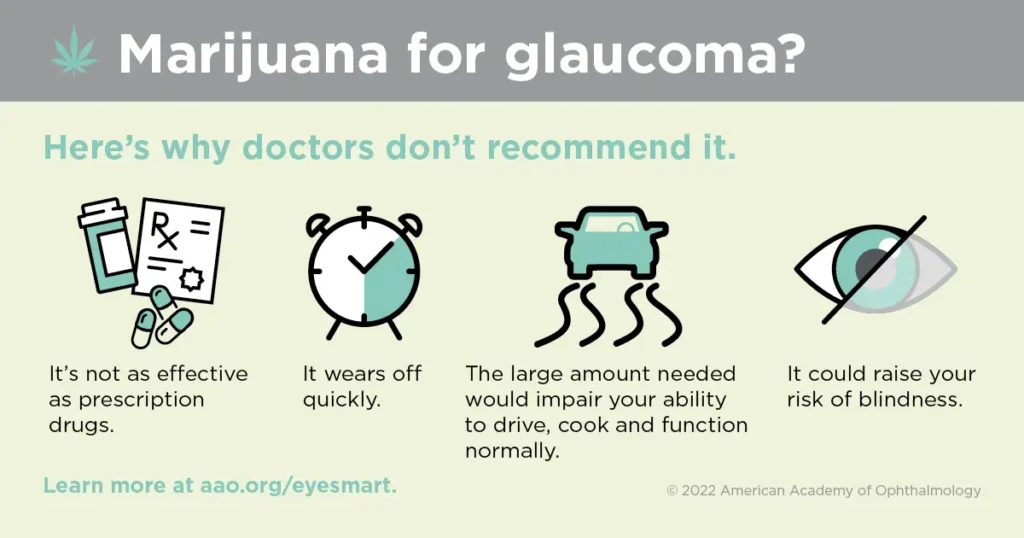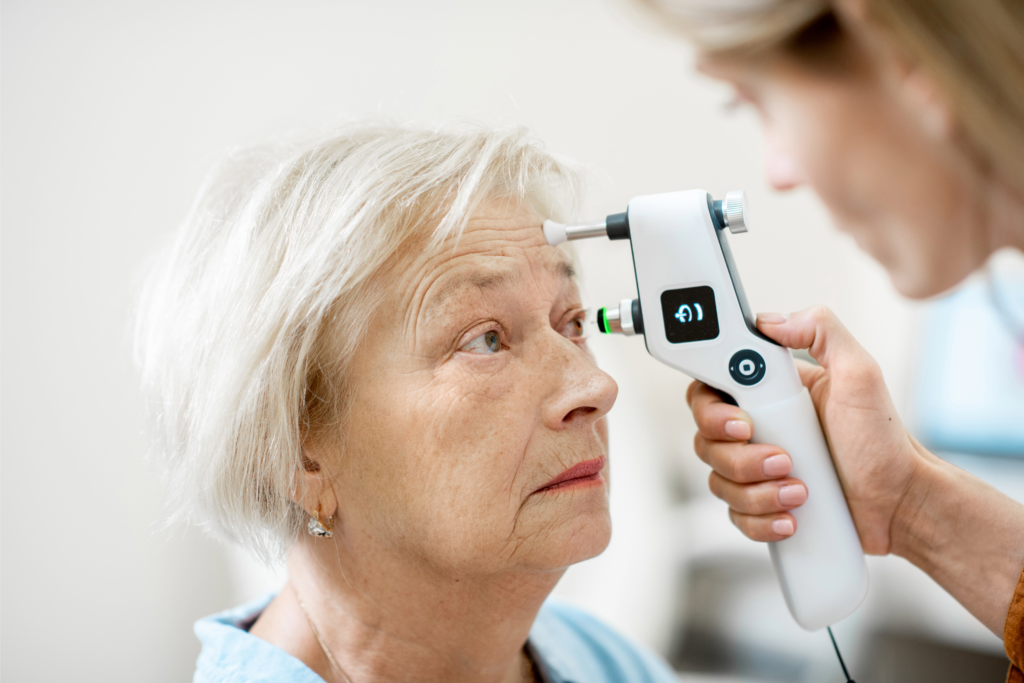
As states continue to legalize medical and recreational sales of marijuana across the USA, I often get asked – “Can marijuana help treat my glaucoma?”
Erin Sieck, MD
Dr. Sieck explains more about the limitations of using cannabis to manage glaucoma.
To properly answer this question, lets first define marijuana and glaucoma.
Cannabis sativa is a plant that contains chemical substances called cannabinoids. Delta-9-tetrahydrocannabinol (THC) and cannabidiol (CBD) are the most commonly referenced cannabinoids and have effects on certain receptors within the brain and body, including the eye. Marijuana is a portion of the cannabis sativa plant that contains high levels of THC and is sold commercially in several forms1.
Glaucoma is a group of diseases classified as a progressive optic neuropathy with associated peripheral vision loss. There are several risk factors for development of glaucoma, including but not limited to age, family history, and intraocular pressure (IOP)2. IOP is the only modifiable risk factor known to date. The mainstay of glaucoma treatment is to lower IOP and thus prevent additional damage to the optic nerve. Optic nerve damage and peripheral vision loss from glaucoma are permanent and represent the second leading cause of blindness worldwide.
There was an initial study in 1971 that showed the inhaled form of THC reduced the IOP in the majority of its subjects and lasted 2-4 hours. This was a small study and on healthy controls, but it sparked interest in the use of THC in glaucoma patients3. Additional studies in the 70s and 80s demonstrated intravenous and oral use of THC also reduced IOP4-5. There was no reduction of IOP with THC administered topically as a drop on the eye6-7. CBD in contrast, has been shown to have no ability to lower IOP and may even increase IOP4. As marijuana was stigmatized and labeled as a level I drug, there was a lack of additional research for decades. Recently, Mosaed et al reported a newer study confirming inhaled THC reduced IOP an average of 15% for an average of 3 hours8.
There is some data, albeit not perfect, that THC can reduce IOP and thus could be seen as a viable treatment option for glaucoma. The huge limitation is the length of action and psychotropic effects. Glaucoma interventions must reduce IOP reliably and consistently for a prolonged period of time. Other agents that reduce eye pressure have longer activity – up to 12 or 24 hours of action. In that case, these medications only have to be administered once or twice a day. In contrast, the 2-4 hours of reported reduction of IOP attributed to THC would require 6 or more administrations per day. In addition, there is no form of THC that lacks the hallucinatory effects of marijuana.
So, to answer the question: “Can marijuana help treat my glaucoma?” – it can lower IOP but is not a current treatment option for patients with glaucoma. Now that we are continuing to establish the associated pressure reduction with THC, there is hope to be able to use this chemical as a therapeutic with a longer effect and without the psychotropic impact.
Currently, the only way to control glaucoma and prevent vision loss is to lower the pressure in your eye. Several current, effective treatments for glaucoma are more reliable and safer than marijuana. I continue to recommend conventional glaucoma therapies including drops, lasers and surgery to my patients. If you have glaucoma, follow your ophthalmologist’s advice to get the treatment that’s right for you.

Sources:
- NIH. Cannabis (Marijuana) and Cannabinoids: What You Need To Know. November 2019. https://www.nccih.nih.gov/health/cannabis-marijuana-and-cannabinoids-what-you-need-to-know.
- Gordon MO, Beiser JA, Brandt JD, et al. The Ocular Hypertension Treatment Study: Baseline Factors That Predict the Onset of Primary Open-Angle Glaucoma. Arch Ophthalmol. 2002;120(6):714–720. doi:10.1001/archopht.120.6.714
- Hepler RS, Frank IR. Marijuana smoking and intraocular pressure. JAMA 1971;217:10:1392.
- Tomida I, Azuara-Blanco A, House H, et al. Effect of sublingual application of cannabinoids on intraocular pressure: A pilot study. J Glaucoma 2006;15:5:349-53.
- Cooler P, Gregg JM. Effect of delta-9-tetrahydrocannabinol on intraocular pressure in humans. South Med J 1977;70:951–4.
- Green K, Roth M. Ocular effects of topical administration of delta 9-tetrahydrocannabinol in man. Arch Ophthalmol 1982;100:265–7.
- Jay WM, Green K. Multiple-drop study of topically applied 1% delta 9-tetrahydrocannabinol in human eyes. Arch Ophthalmol 1983;101:591–3.
- Mosaed et al. Cannabis, Glaucoma and Intraocular Pressure. Review of Ophthalmology. 10 April 2022. https://www.reviewofophthalmology.com/article/cannabis-glaucoma-and-intraocular-pressure.
